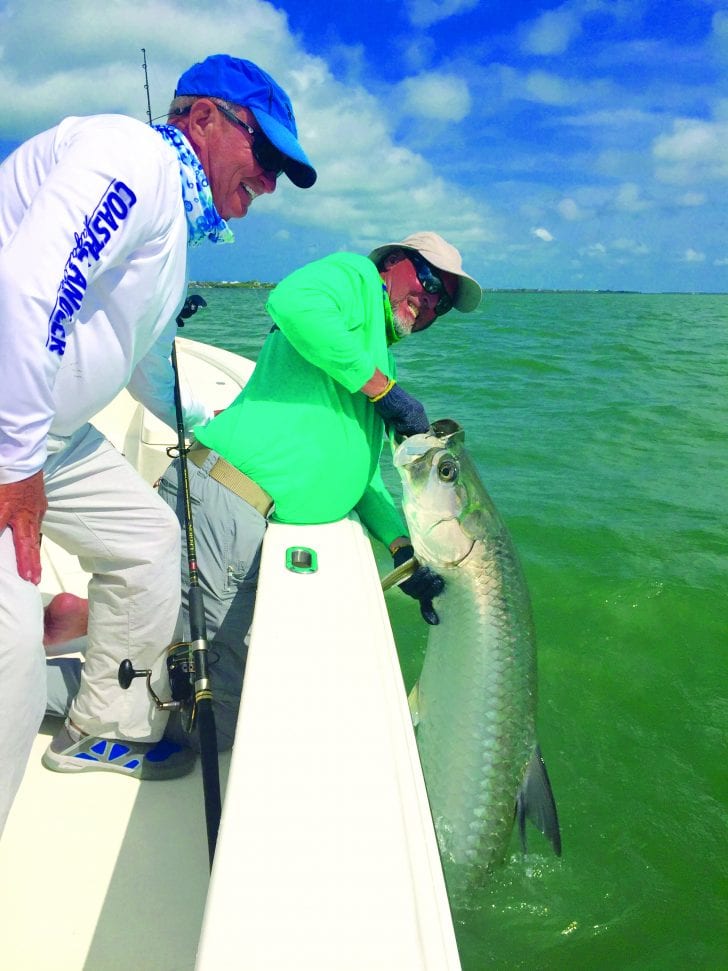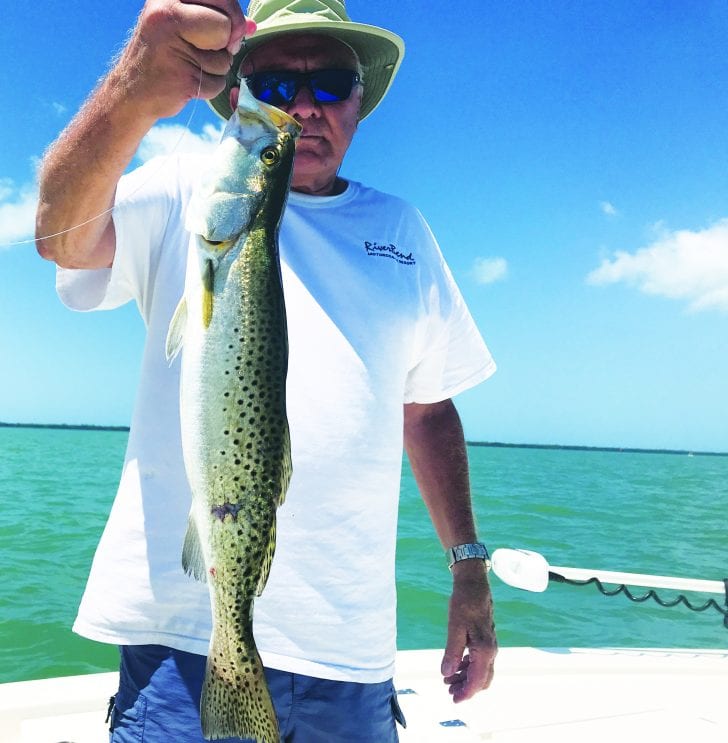by Captain Terry Fisher

Big tarpon are cruising the beaches. As always, they are in the passes, areas of Pine Island Sound and Charlotte Harbor. These fish are migrating in schools from Mexico and are looking to feed on virtually any ‘bait of choice’ in their path. Live/dead ‘baits of choice’ include; blue and pass crab, mullet, herring, sardines, ladyfish, pinfish, mackerel and catfish fillets. These baits may be fished on the bottom of the seabed or under a balloon or cork. Use gear strong enough to handle anything from 60 to 150-pound fish. Spinning reels in the 6000 to 8000 classes will do the job. I suggest using 8’ rods, fully spooled with 65lb. test line. Attach a 60-100lb. leader with 6/0 to 8/0 circle hooks. Anglers needing help or want to learn how to catch tarpon, should join a local Tarpon Club to learn how, where, and when to fish for them.
Snook season is closed in areas on the gulf coast. Be sure and check FWC for updated releases regarding harvesting and sizes. Regardless, May is a fantastic month to catch big snook cruising along the beaches and in the passes between the outer islands of Sanibel, Captiva, N. Captiva, Cayo Costa and Boca Grande. A variety of presentations will work. I prefer to free-line live sardines, herring or pinfish, using light tackle with circle hooks. I recommend 4000 series spinning reels with 10-20lb. rated rod, loaded with 10-15lb. test line. Attach a two foot 30-40lb. fluorocarbon leader to the line.

Spanish mackerel are on the flats of Pine Island Sound, in the passes and off the beaches of the outer islands in good numbers. I like to use silver spoons with 60 to 80lb. monofilament leaders to catch them. Look for diving birds and fish jumping to avoid being eaten from the aggressive schools of these ‘toothy’ fish.
Anglers looking specifically for offshore action may want to consider fishing 75-85’ of water for legal size grouper. Otherwise, closer inshore reefs of 30-40’ will more likely lead to catching sheepshead, small lane and vermillion snapper. This is the time of year for king mackerel, permit, cobia and other and migratory species to ‘hang out’ around these reefs. ‘Chum-up’ the waters and watch for surface action to indicate game fish are eating. All reef species require the use of circle hooks.
Tripletail on the buoys require ‘run and gun’. It is expensive. Nevertheless, they are fun to hunt and catch. Many times, tripletail will be deep in the water column around the buoys. Once located, drift silently toward the buoy and free-line a shrimp to catch them. The larger the fish, the more stealth required to approach and ‘catch’ them. Check FWC regulations for size and numbers of harvest, as they have changed the rules on at least two different occasions over the last year or so.

While fishing offshore during May, be alert to cobia and permit patrolling the reefs. They prefer small crabs and are a blast to catch as well as great eating. Chumming is the key to getting the permit to bite. Watch for surface action when the permit dine your chum, then make a presentation to them.
